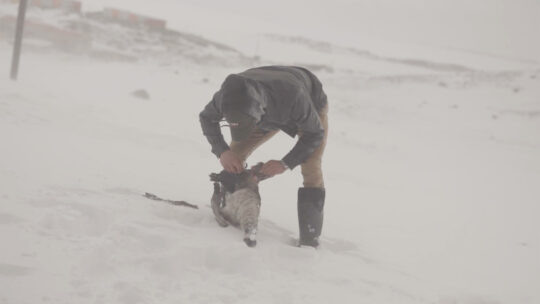Developed through extensive consultation with Nunavummiut, the Nunavut Land Use Plan aims to promote and strengthen Inuit culture and heritage through the identification of local priorities. The collection and transfer of Inuit Qaujimajatuqangit, first-hand knowledge obtained from elders, has informed all aspects of the Plan.
Your Home.
Your Land.
Your Decision.
Nunavut Land Use Plan, the largest regional land use planning initiative in the world.
About The Plan
After more than 15 years of engagement and consultation, In June 2023 the Nunavut Planning Commission released the 2023 Recommended Nunavut Land Uses Plan When finalized, the Plan, covering more than 2 million km2 of land, water, and ocean, will be the largest regional land use plan in the world. The Nunavut Land Use Plan is the largest piece of unfinished business from the Nunavut Agreement, which was signed in 1993. The Nunavut Land Use Plan is the missing piece for local participation in decision-making concerning the use, management and conservation of land, water, and resources.
The finalization of the Plan requires the signatures of the designated representatives of the three signatory organizations, Nunavut Tunngavik Inc., Government of Nunavut, and Government of Canada. If the finalization and implementation of this Plan is important to you, please contact your political representative in these organizations and let them know.
Mixed Use
In the current draft, over 1,450,000 km2 – roughly the combined size of France, Spain and Germany – are
designated as Mixed Use and are open for mineral development. The Plan does not eliminate existing mineral
rights.

Limited Use Areas
Limited Use designations will safeguard 550,835 km2 of habitat. Limited Use Areas meet all the international criteria of a Protected Area and trigger the requirement for an Inuit Impact Benefit Agreement required by Article 9 of the Nunavut Agreement.

Conditional Use Areas
Conditional Use areas , which feature seasonal protections, make up another 319,249 km2. These areas are crucial for species – including Species-at-Risk – such as the Dolphin and Union barren-ground caribou herd.

“Once adopted, it will provide certainty over protecting our land, air, and waters, and for how we can develop our Territory to benefit all of the people of Nunavut.”
– Paul Quassa, Former Primer NPC Commission Chair
Why We Must Act Now
For the NLUP to be implemented, the Government of Canada, the Government of Nunavut, and Nunavut Tunngavik Inc. must all approve of and sign the plan.
Starting with public hearing in September 2022, you have a chance to have a say in the plan.

Stories from the Land
Selected Considerations
- Healthier Communities: Community priorities and values are central to the Land Use Planing process. The Plan supports Inuit social and cultural needs and aspirations by planning for the ongoing management of community-identified areas of interests including several rivers and lakes.
- Alternative Energy: Diversifying Nunavut’s energy supply from fossil fuels is a priority. Alternative energy sources in Nunavut currently include water, wind, and solar sources. The Plan identifies future sites for hydro-electric generation opportunities.
- Healthier Communities: Community priorities and values are central to the Land Use Planing process. The Plan supports Inuit social and cultural needs and aspirations by planning for the ongoing management of community-identified areas of interests including several rivers and lakes.
- Polar Bears: Designated as a species of special concern, polar bears are an important part of Inuit culture. They are also integral to the marine ecosystem as the top predator within the food chain. The Plan assures the security of polar bear denning areas.
- Fisheries: The commercial fishing sector in Nunavut continues to grow, with turbot, char and shrimp currently being harvested from its seas. The Plan protects the land around those areas most vital to the success of Nunavummiut commercial fishers.
- Aerodromes: Every community in Nunavut depends on airlift and sealift to meet transportation needs. The Plan manages land use in areas around essential aerodromes to ensure they remain accessible for the future.
- Minerals: The mining industry is a key contributor to Nunavut’s economy, providing jobs, infrastructure, education, skills, career development and local business opportunities – and accounting for 27% of territorial GDP. The Plan outlines those areas where mining is allowed to balance economic interest with environmental preservation.
- Oil and Gas: The oil and gas sector in Nunavut is expected to grow, with both Sverdrup basin and Baffin Bay showing oil and gas potential. The Plan outlines those areas where oil and gas exploration and production is prohibited to balance economic interest with environmental preservation.
Caribou Protection
Caribou are an essential resource within the northern ecosystem. Herds in certain parts of Nunavut have decreased in number by as much as 98% over the last three decades. The Plan protects caribou post-calving areas, key access corridors and freshwater/ice crossings while also recognizing that caribou provide food, support cultural heritage, and drive local economies.

Get Involved
The Friends of Land Use Planning is a collection of individuals who support Indigenous-led land use planning across large landscapes in Canada.



